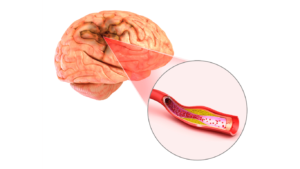Intro
Experiencing fluctuations in our emotions is a natural part of being human. However, when we find ourselves trapped in a persistent state of low mood, it can feel isolating and overwhelming. It's crucial to remember that it's okay not to be okay. Addressing and understanding our feelings of low mood or depression is the first step towards healing and recovery. In this post, we will explore what low mood means, how it differs from depression, and provide practical tips and strategies for overcoming these challenging feelings.
Understanding Low Mood and Its Causes

Feeling down, sad, or energetically depleted characterizes low mood, a temporary emotional state that many people experience. This condition is often the result of various external factors that momentarily disrupt our emotional equilibrium. Life's inherent stresses, from personal relationship difficulties to professional uncertainties, can significantly contribute to feelings of low mood.
Moreover, transitions, whether they be moving to a new city, starting a new job, or experiencing loss, can precipitate these feelings. Even environmental changes, such as shifts in season or weather patterns, can have a tangible impact on our emotional well-being. Recognizing these triggers is a vital step in understanding and managing low mood.
By acknowledging the external influences on our emotions, we can better navigate through these periods of low spirits, equipped with the knowledge that these feelings are both common and transient. This understanding empowers us to implement strategies that can help alleviate the immediate effects of low mood, while also building resilience against future emotional disruptions.
Distinguishing Between Low Mood and Depression
Low mood and depression, although they may seem similar at a glance, are distinct in their severity, duration, and impact on daily functioning. Low mood is a common and temporary experience characterized by feelings of sadness, fatigue, and disinterest, often triggered by specific life events or stressors. It tends to be short-lived, allowing individuals to recover without professional intervention.
In contrast, depression is a clinical condition that encompasses a more intense level of emotional, physical, and cognitive symptoms. These symptoms persist for weeks, months, or even longer, significantly impairing an individual's ability to perform routine tasks, maintain relationships, and enjoy life. Key indicators that distinguish depression from a transient low mood include persistent feelings of emptiness, profound hopelessness, and in severe cases, thoughts of self-harm or suicide.
Furthermore, depression may not always have an identifiable external trigger and can result from a complex interplay of genetic, biochemical, and environmental factors. Understanding these differences is essential for recognizing when to seek help from mental health professionals who can provide the necessary support and treatment to manage depression effectively.
Simple Lifestyle Changes to Improve Your Mood
Integrating minor yet impactful lifestyle modifications into your day can have a significant positive effect on combating low mood. Engage in physical activities that you enjoy, as exercise prompts the body to release endorphins, natural chemicals that act as mood elevators. Focus on your sleep hygiene to ensure you get adequate rest, as sleep directly affects your emotional and psychological well-being. Nutrition also plays a critical role; aim for a balanced diet that includes foods rich in omega-3 fatty acids, whole grains, and a variety of fruits and vegetables to nourish your body and mind.
Additionally, consider limiting your intake of substances that can adversely affect mood, such as alcohol and caffeine, which may contribute to anxiety and sleep disturbances. Incorporating these simple yet effective habits into your lifestyle can create a foundation for improved mood and overall health. By addressing these fundamental aspects of daily living, you provide your body and mind with the necessary resources to navigate through periods of low spirits, leading to a more balanced and joyful life.
The Power of Connection: Reach Out to Others
In times of feeling low, the inclination might be to withdraw and isolate oneself, but this often deepens the feelings of sadness and disconnection. Taking the initiative to communicate with friends, family members, or trusted individuals can serve as a crucial lifeline. The act of sharing your experiences and emotions can illuminate shared human struggles, fostering a deeper connection and mutual understanding.
It is also beneficial to consider participating in community activities or support groups where you can meet others who may be navigating similar emotional landscapes. This interaction not only disrupts the cycle of isolation but also enriches your support network, offering different perspectives and coping strategies. Engaging in volunteer work can also provide a sense of purpose and fulfillment, further counteracting the effects of low mood. Remember, vulnerability in reaching out and connecting with others can be a profound source of strength and healing.
Each conversation and shared experience can chip away at the walls of isolation, gradually ushering in light and warmth into one's emotional world. The journey through low mood is a personal one, but it doesn't have to be a solitary path.
Mindfulness and Meditation Techniques to Combat Low Mood
Incorporating mindfulness and meditation into your daily routine can be a transformative approach to managing low mood. These practices encourage a state of active, open attention on the present moment, which can shift focus away from negative thought patterns and reduce the impact of stressors contributing to low mood.
Mindfulness involves observing your thoughts and feelings without judgment, fostering a deeper understanding of how your emotions influence your well-being. Meditation, particularly practices like mindfulness meditation, focused attention, and loving-kindness meditation, further aids in cultivating a sense of calm and emotional stability.
To get started, find a quiet space where you can sit comfortably without distractions. Begin with a few minutes of deep breathing, focusing on the sensation of air entering and leaving your body. This simple act can help anchor you in the present and ease tension. Experiment with guided meditation apps or online resources if you're seeking structure and guidance in your practice. The key is consistency; even brief daily sessions can yield significant benefits.
Incorporating mindfulness exercises throughout your day can also be beneficial. For example, practice mindful eating by paying full attention to the experience of eating, or take mindful walks, fully immersing yourself in the sights, sounds, and sensations around you. These practices can help cultivate a mindset that appreciates the present moment, diminishing the hold of low mood over time.
Setting Realistic Goals and Celebrating Small Wins
Navigating through periods of low mood can sometimes make the simplest tasks feel monumental. It’s beneficial to break down larger tasks into smaller, more manageable goals. This approach not only makes tasks seem less daunting but also provides frequent opportunities for achievement. Begin by identifying one small activity that feels achievable, such as writing a to-do list for the day or dedicating ten minutes to a hobby you enjoy.
As you accomplish these tasks, take the time to acknowledge and celebrate these victories, no matter how minor they may seem. This could be as simple as treating yourself to your favorite snack or taking a moment to reflect on what you've achieved. Each small win contributes to a greater sense of self-efficacy and momentum, gradually building your confidence to tackle more substantial challenges. This process is about progress, not perfection. By focusing on what you have accomplished rather than what you haven't, you shift your mindset towards a more positive and resilient outlook.
This shift is crucial for moving through periods of low mood with a sense of purpose and achievement. Engaging in this practice encourages a healthier interaction with your goals and activities, fostering a more supportive internal environment for managing mood fluctuations.
The Role of Professional Help in Managing Low Mood

When self-help measures and lifestyle changes aren't enough to lift the veil of low mood, it may be time to seek the guidance of a mental health professional. This step is often crucial for those whose daily lives are significantly affected by their emotional state. Mental health experts, such as psychologists, psychiatrists, and licensed counselors, have the training and experience necessary to provide a safe space for individuals to explore their feelings. They can offer coping strategies tailored to each person’s unique situation, potentially incorporating therapy sessions, cognitive-behavioral techniques, or medication when appropriate.
Consulting with a professional can also provide a fresh perspective on the challenges one is facing, helping to identify underlying issues that may contribute to feelings of low mood. It's an opportunity to learn effective skills for managing stress, resolving personal issues, and making positive changes. Importantly, engaging with a mental health professional emphasizes the proactive steps one is taking toward personal well-being.
It’s vital to remember that reaching out for professional help is a proactive step towards wellness, not an admission of failure. Each individual’s journey is different, and what works for one person may not work for another. Therefore, professional guidance can be instrumental in navigating the complexities of mental health, laying down a path towards recovery that is both personalized and supportive.
Creative Outlets as a Means of Expression
Delving into creative pursuits offers a unique avenue for emotional exploration and expression. When words fail to encapsulate the depth of our experiences, artistic activities such as painting, writing, or playing music can serve as powerful tools for articulating complex feelings. This creative process can act as a therapeutic escape, providing a space for introspection and personal insight. By channeling emotions into art, individuals can uncover new layers of understanding and perspective regarding their inner state. Furthermore, the act of creation itself can be incredibly rewarding and affirming, fostering a sense of achievement and personal growth.
Creative engagement also introduces a mindful aspect to our daily routines, encouraging us to focus fully on the task at hand. This concentrated attention can temporarily alleviate the weight of persistent low mood by shifting our focus away from distressing thoughts to the present moment of creation. Whether it's sketching in a notebook, strumming a guitar, or crafting a poem, these activities invite a meditative state of mind where flow and tranquility can replace turbulence and distress.
Moreover, sharing one's creative work can enhance feelings of connection and empathy, breaking the cycle of isolation often associated with low mood. Engaging with a community of like-minded individuals, whether through online platforms or local arts groups, can validate our experiences and offer encouragement. Through creative expression, we not only navigate our emotional landscapes but also build bridges to understanding and support within our communities.
The Importance of Routine in Maintaining a Balanced Mood
Creating a structured daily schedule is a strategic way to support mental health and emotional stability. Adhering to a consistent routine aids in setting a rhythm for your day, which can be particularly grounding when navigating through periods of low mood. By establishing set times for waking up, participating in meals, engaging in physical activity, and settling down for the night, you provide your body and mind with a predictable framework that can ease anxiety and boost mood.
This predictability helps manage stress levels by reducing the number of decisions you need to make each day, thus conserving mental energy for more rewarding tasks. Regularity in daily activities also promotes better sleep patterns, a critical component of emotional well-being. Additionally, incorporating specific times for relaxation and hobbies into your routine ensures that you have moments to look forward to, breaking up the monotony and providing opportunities for joy and fulfillment.
Over time, the security of a routine fosters resilience, making it easier to cope with the ebbs and flows of life's challenges. Embracing a structured daily plan is a proactive step towards nurturing a more balanced and stable mood, helping pave the way for improved overall mental health.






